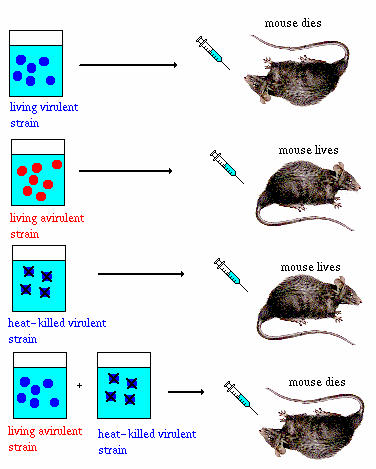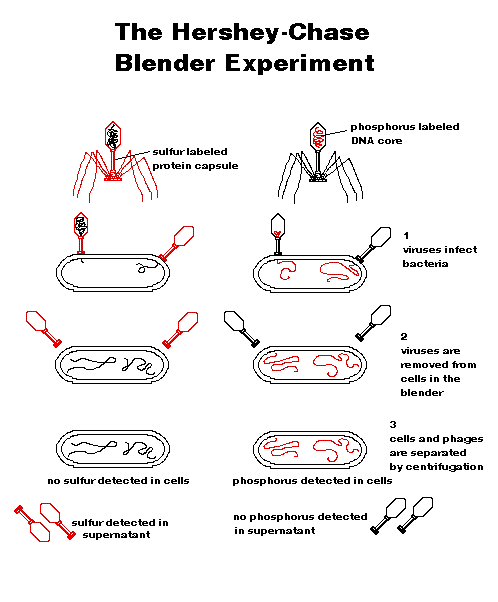

Avery and his colleagues separated the dead virulent cells into fractions and coinjected them with the avirulent strain, to see which fraction contained the transforming principle. They discovered that the fraction was DNA. Most scientists at the time, in favour of the theory of protein as genetic material, discounted this result and said that there must have been some protein in the fraction that conferred virulence.
The Hershey-Chase Experiment - DNA is the Genetic Material
Finally, in 1952, Alfred Hershey and Martha Chase performed the definitive
experiment that showed that DNA was, in fact, the genetic material. By
radiolabelling sulphur in one culture, they could tag the path of proteins
and not DNA, because there is no sulphur in DNA and there is sulphur in
the amino acids methionine and cysteine. By radiolabelling phosphorous,
the opposite effect could be achieved. DNA could be traced and not protein,
because there is phosphorous in the phosphate backbone of DNA and none
in any of the amino acids. Cultures could be grown in each of these two
ways and the phage purified away from the host bacteria, resulting in one
culture in which only the phage protein was labelled, and one culture in
which only the phage DNA was labelled.

Side by side experiments were performed with separate phage cultures in which either the protein capsule was labeled with radioactive sulfur or the DNA core was labeled with radioactive phosphorus.
Experiment Summary
# The radioactively labeled phages were allowed to infect bacteria.
# Agitation in a blender dislodged phage particles from bacterial cells.
# Centrifugation pelleted cells, separating them from the phage particles
left in the supernatant.
Results Summary:
# Radioactive sulfur was found predominantly in the supernatant.
# Radioactive phosphorus was found predominantly in the cell fraction,
from which a new
generation of infective phage was generated.
# Thus, it was shown that the genetic material that encoded the growth
of a new generation of phage
was in the phosphorous-containing DNA.